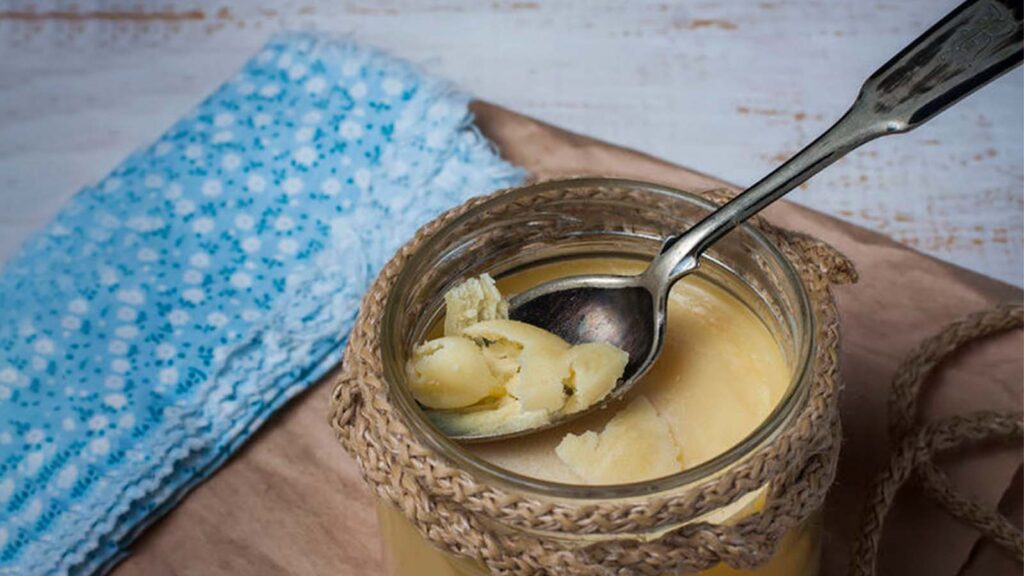You will often find a jar of ghee sitting on my kitchen countertop ready for cooking and garnishing. Its golden goodness is something I treasure.
What is ghee?
Sometimes called ‘clarified butter’, ghee is butter that has been purified. Butter is cooked until the milk solids turn brown and stick to the bottom of the pan. After straining, you are left with a delicious pure butter fat that can be stored at room temperature.
Is ghee good for me?
Ghee is one of my favorite healthy fats. It nourishes the tissues of the body and soothes the stomach, aiding digestion. Because of the clarification process, unlike butter, ghee is very low in lactose and casein, and supplies our bodies with vitamins like A, E, and K2. Used in moderation and in connection with a Yoga Diet, ghee’s nourishing, oily properties bring balance when you are feeling nervous, scattered, or if you find yourself easily agitated or quick to anger.
How do I use ghee?
Ghee can be used the same way you would use butter or oil. Melted on toast, in mashed potatoes, or on steamed veggies, ghee keeps your meals from tasting dry. You can cook or fry with ghee as you would your favorite cooking oil. In fact, it’s ideal for cooking since it has a high smoke point and performs well at high heat. Ghee is used traditionally in Indian cooking for frying fragrant spices for curries or dhals. It has a rich, nutty flavor. For a delicious breakfast, drizzle some on hot cereal with a small pinch of sea salt and a little bit of maple syrup.
Where can I find ghee?
Widely available in grocery stores and health food stores, as well as traditional Indian groceries, you can also make ghee yourself. When I see that my jar is getting low, I try to make more so that I don’t run out. Here is a simple recipe. Once you begin to recognize the stages of the cooking process, it will become second nature.
You will need:
- A heavy-bottomed medium saucepan
- A wooden spoon
- A sieve (fine mesh)
- Cheesecloth
- 1 lb unsalted butter
- 1 pint Mason jar
Directions:
- Cut the butter into squares and add to your saucepan
- Melt over medium heat, stirring from time to time
- When the butter begins to simmer turn heat down to medium/low
- Allow the butter to simmer for about 5 minutes, watching as bubbles form a thick foam on top. Stir occasionally.
- As bubbles grow, the foam will thin out and the bubbles will get larger and clearer
- The milk solids will begin to stick to the sides of the pan. This is good.
- Scrape the sides of the saucepan now and then to allow the solids to sink to the bottom
- As the solids sink, the liquid will begin to clarify, become golden, and the foam will disappear
- The solids at the bottom will brown
- Keep stirring so the solids don’t attach to the saucepan and burn
- Now the butter will begin foaming a second time. This means that it’s ready.
- Remove from heat and allow it to sit for a few minutes
- Line the sieve with a few layers of cheesecloth and set the sieve over a large steel bowl
- Pour the ghee over the sieve to strain out the solids
- Once the liquid is cool enough, pour the ghee into your glass jar and cover loosely until it sets (this can take a few hours at room temperature)



